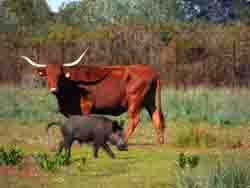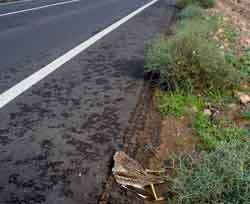A research team led by the Doñana BIological Station and the Universidad Pablo de Olavide have detected wild-caught pets in 95% of the localities in the Neotropic and warns of the risk of zoonotic outbreaks
An international research team, led by the Doñana Biological Station (CSIC) and the University Pablo de Olavide, has analysed the presence of wild pets across the Neotropics, from Argentina to Mexico and the Dominican Republic, and concluded that this activity poses a potential risk for human health and biodiversity conservation. Researchers carried out a continental-scale survey -during 13 years and across 15 countries- and detected wild pets in 95% of the localities surveyed. The conclusions of this study have been recently published in the journal People and Nature.
Illegal wildlife trade represents not only a conservation problem, but also a very high risk of zoonotic disease transmission. It is estimated that, on the international market, more than 1.5 million birds are illegally captured each year to be kept as pets. The situation on a more local scale goes unnoticed and these numbers may be even larger. In fact, this activity is widespread in some areas such as the Neotropics, where there is a long tradition of keeping wild pets dating back to pre-Columbian times.
Although zoonoses are not new, it is estimated that they cause the death of 2.7 million people annually. The current trend of human population growth and connectivity, as well as the fact that humans invade habitats that were previously practically inaccessible, create the perfect scenario for zoonotic outbreaks and their large-scale transmission. In addition, cross-species disease transmission also affects livestock and wildlife, which has negative ecological and socioeconomic consequences. For this reason, identifying the activities that facilitate infection and their potential routes of transmission between humans, livestock and wildlife should be a priority.
During their study, the international team detected about 10,000 individuals of 274 native species of wild origin, kept in captivity in more than 6,500 homes. Although most of the pets were parrots, and this is not considered a high-risk group in terms of zoonosis transmission, some diseases transmitted to people, and especially to other domestic animals, such as psittacosis, are already known. But this group can cause important conservation problems for native species, since they can carries certain viruses that could pose another threat to native birds. When these wild individuals are in contact with domestic animals such as chickens, and even other exotic parrots, they can become infected with diseases that are absent in wild populations, and when they escape -something that happens frequently- they can carry these diseases with them, generating a conservation problem. Moreover, the fact that they have not transmitted high-risk diseases to date does not mean that they cannot do so in the future, as in the case of avian influenza. All this without forgetting that there is a percentage of species found as pets, such as primates or rodents, which do transmit high-risk diseases to humans, and which have already caused serious epidemics in the past.
The scientific team warns that, although it is not possible to predict where an outbreak of a new disease will occur, there are regions of the planet that are considered biodiversity hotspots, and therefore are also expected to be pathogen hotspots. These areas coincide with the tropics, which are zones in which the human population is also experiencing great population growth, as well as the development of infrastructures that greatly increase connectivity between remote areas and large cities.
For all these reasons, it is essential to start acting to detect and prevent possible zoonotic outbreaks. For the scientific team, preventive measures should focus on two key points: discouraging the keeping of wild animals in captivity and increasing health surveillance to aid in the early detection and control of emerging outbreaks in humans or animals. "Our work shows that the tradition of keeping wild animals as pets in the Neotropics represents an ideal scenario for the cross-transmission of pathogens between humans, domestic animals and livestock, as well as wildlife itself," warns Pedro Romero-Vidal, a researcher at the Doñana Biological Station, who led this study.
Reference
Romero-Vidal, P., Blanco, G., Barbosa, J. M., Carrete, M., Hiraldo, F., Pacífico, E. C., Rojas, A., Bermúdez-Cavero, A. O., Díaz?Luque, J. A., León?Pérez, R., & Tella, J. L. (2024). The widespread keeping of wild pets in the Neotropics: An overlooked risk for human, livestock and wildlife health. People And Nature. https://doi.org/10.1002/pan3.10625
Contact
outreach @ ebd.csic.es


 El comercio ilegal de especies, un problema para la biodiversidad y riesgo para la salud
El comercio ilegal de especies, un problema para la biodiversidad y riesgo para la salud

